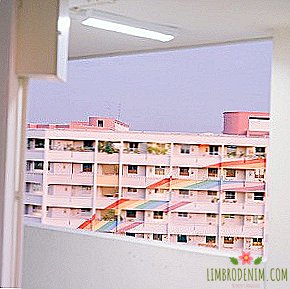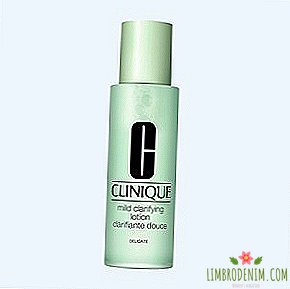Sweet Bones: Avoiding Fractures
DIFFICULT TO FIND THE PERSON WHO HAS ANY TIME IN LIFE HAS NECESSARY KNEE, back or neck - but few know how to properly take care of their bones and joints. Do I need to drink chondroprotectors - drugs that protect the articular cartilage? Is running dangerous for knees? What is "salt deposition"? Is it true that women have a higher risk of bone fractures? We understand these and other issues.

Is it dangerous to run?
Significant loads can harm the body - and professional athletes, such as football players, sometimes even have to go for a replacement, or prosthetics, of the knee or hip joints. But how dangerous are ordinary, amateur sports? In 2008, Stanford University conducted a study involving about a thousand people who are interested in running. The condition of the knees of the runners and those who never ran was the same.
It is worth remembering that a healthy joint does not emit clicks and does not creak, does not crack or hurt, and the range of movement in it is unlimited. If any warning symptoms appear, it is better to consult a doctor - quite possibly, it is arthritis or arthrosis. The word "arthritis" literally means inflammation of the joint - and it can be of a very different nature. It can be infectious arthritis, traumatic or, for example, arthritis as a manifestation of systemic autoimmune disorders - in total there are more than one hundred types. Anyway, it is necessary to determine the cause of arthritis or arthrosis together with your doctor and to start treatment.
Often, people frighten each other with a kind of “salt deposition” - there is no such thing in medicine, and in everyday life osteophytes are so called - the outgrowths of bone tissue directed inside the joint. Most often, osteophytes are found in the spine, are detected by X-ray examination. If an osteophyte does not manifest itself (for example, it does not cause pain), then there is no need to treat it.
Do I need a "magic" tablet?
If you believe advertising, then chondroprotectors - supplements for the prevention of diseases of the joints - are needed by absolutely everyone. Most of these supplements are based on a combination of glucosamine and chondroitin sulfate; These substances relieve swelling, reduce inflammation, prevent destruction and stimulate the formation of cartilage tissue in the joint. In theory, they should repair articular cartilage and prevent its damage in the future. But there is no evidence of their effectiveness so far: in January 2017, data from these active substances were published - and in the treatment of osteoarthritis of the knee and hip joints, they, although not harmful, were ineffective. With regard to the preventive role of chondroprotectors, scientists believe that the available data is not enough for definitive conclusions.
How to keep your joints healthy? Get more movement, strengthen muscles and lose weight - it increases the load on the joints. In order to avoid injuries you need to follow the technique of exercises and be sure to warm up before training, and after it - do stretching. Shoes must match the selected type of activity - for example, you need to run in running shoes for running. Those who already have problems are recommended to train in the water: water relieves stress on the joints, but it loads muscles well enough - swimming can even relieve pain.

Why are women's bones especially fragile?
If bone density decreases, then osteoporosis develops - increased bone fragility, in which the lightest injury can lead to a fracture (and sometimes enough to sneeze or cough). The reason is the decrease in the content of calcium compounds in the bones; Different states can lead to this, but the most frequent of them is menopause. Estrogens are also responsible for bone density - and in the first five years of menopause, when their level begins to decrease, bone mass decreases by about ten percent. According to the International Osteoporosis Foundation, it is observed in about a third of postmenopausal women in the United States and Europe - and almost half of them will have at least one fracture. Typical slouching of elderly people is associated with compression fractures of the vertebrae due to too much decrease in their density.
Osteoporosis can occur at a young age, even in children and adolescents, but is usually associated with other diseases (for example, diabetes or anorexia) or medication. Those who receive chemotherapy are even prescribed special drugs to help fight bone loss. But the most important risk factors are female gender, age, ethnicity (the risk is higher among Caucasoid women and Asians), a sedentary lifestyle, smoking and alcohol abuse. It is sometimes said that caffeine "flushes out" calcium from bones - but in several studies the link between coffee consumption and bone density was not found. At the same time, for example, in smokers, bone mineral density was lower than in those who did not smoke.
Will milk and sport help?
To maintain a normal level of calcium in the bones, it must come from food, and the rate of this intake varies depending on age and hormonal status. Young women need about 1000 mg per day, postmenopausal - 1200, for pregnant women - from 1000 to 1300. You can find out if you get enough calcium from food with this calculator. The main sources of calcium are milk and dairy products, green vegetables like broccoli, some fruits - oranges and apricots, almonds, Brazil nuts. A lot of calcium in canned fish that can be eaten right with the bones - for example, sardines and salmon. Vitamin D plays an important role in the absorption of calcium, which is indicated for almost everyone, and the dosage should be determined by the doctor.
The most important proven fact: bone density can be increased strength training. The International Fund for Osteoporosis has published recommendations where specific exercises for people of different ages are described in detail, both for prevention and for those who already suffer from osteoporosis. In general, most people are shown strength training for thirty to forty minutes, three or four times a week. Studies have shown that with a sedentary lifestyle, fractures occur more often: women who sit nine hours a day, fractures occur 50% more often than those who are active and sit less than six hours a day. Another important way to prevent osteoporosis at the onset of menopause is hormone replacement therapy. Maintaining adequate levels of estrogen, it not only improves mood and eliminates hot flashes, but also protects bones from loss of density.
Photo: John Karel / Tumblr, marky21 - stock.adobe.com, phirakon jaisangat - stock.adobe.com





